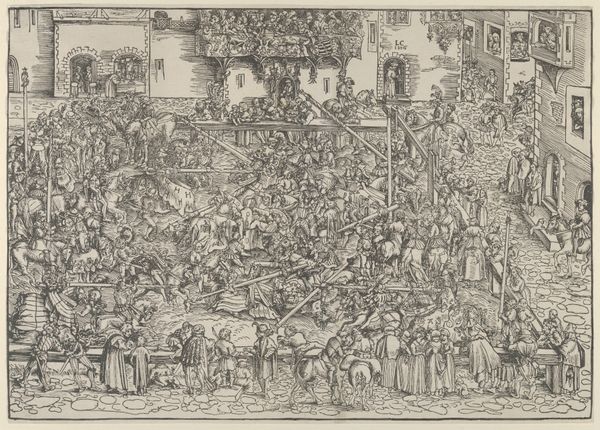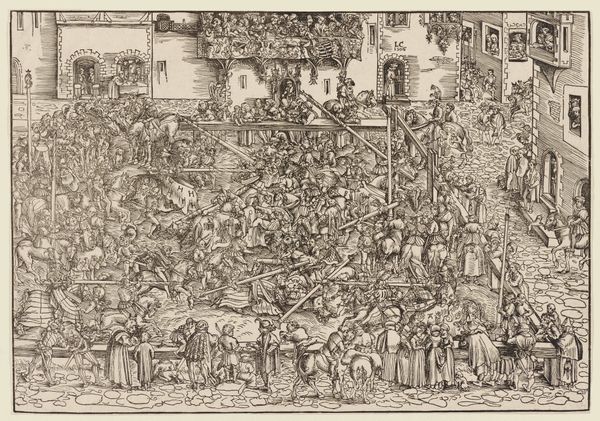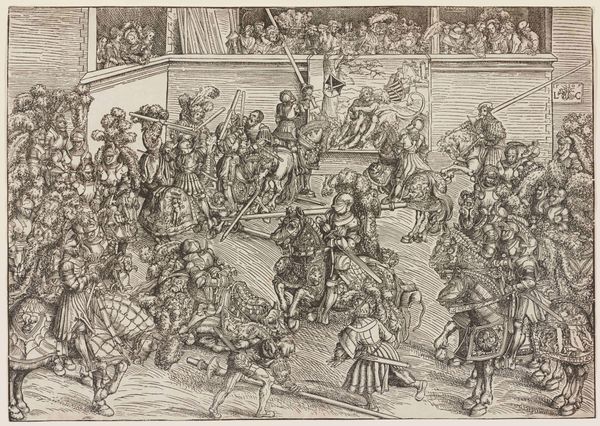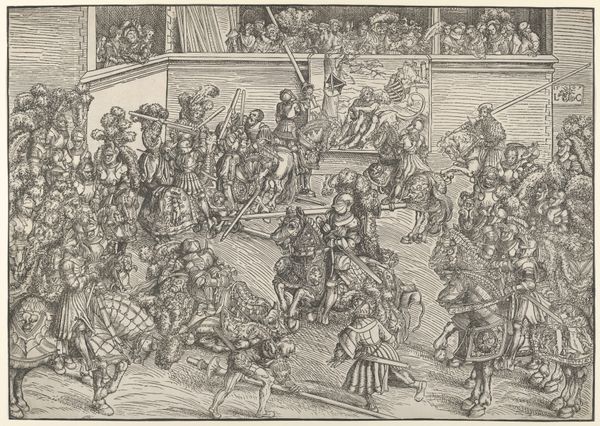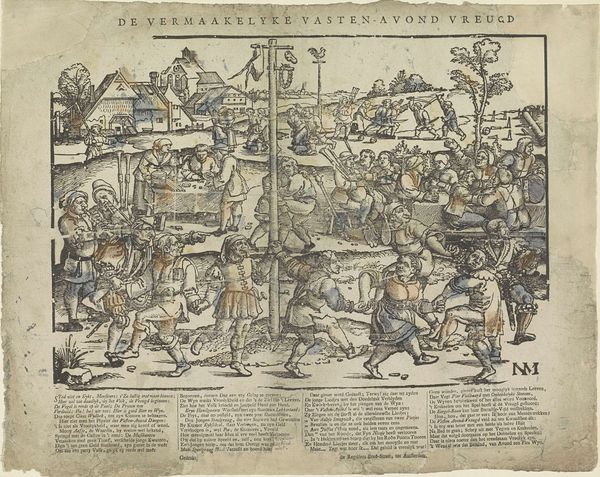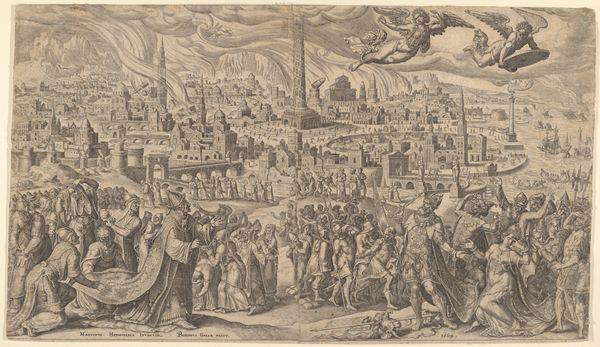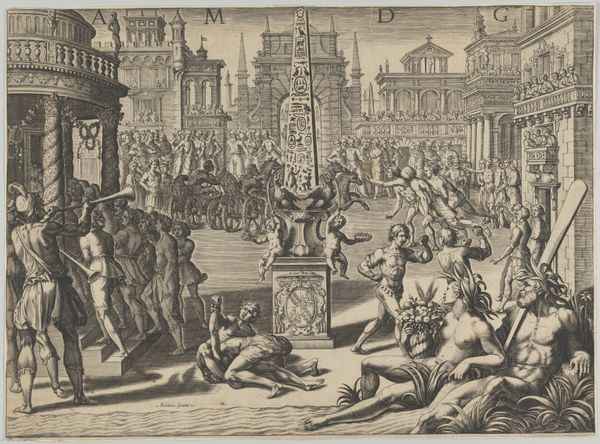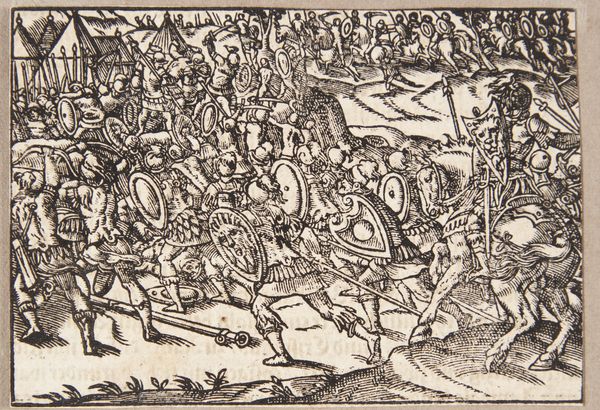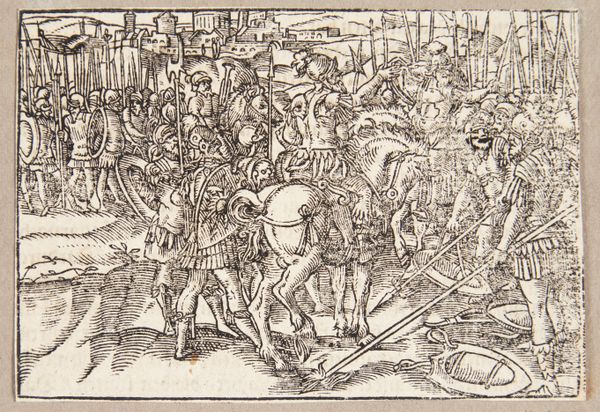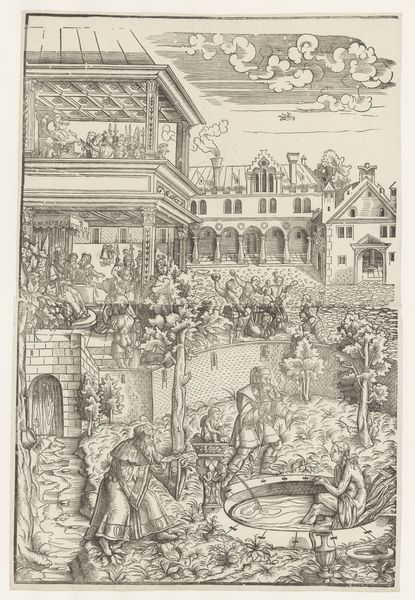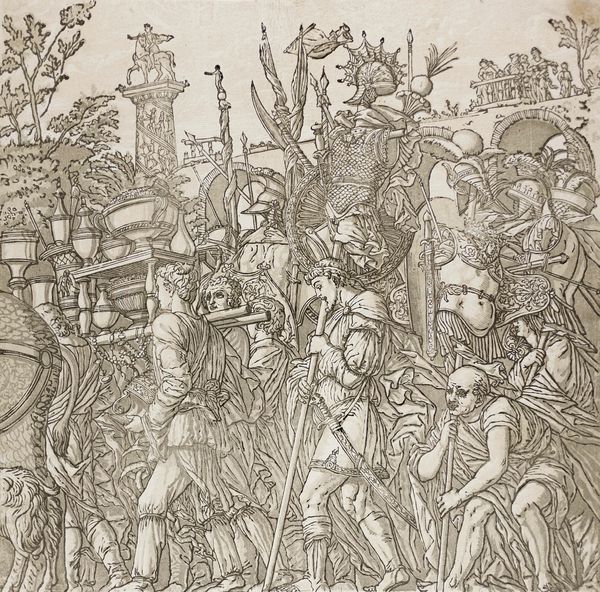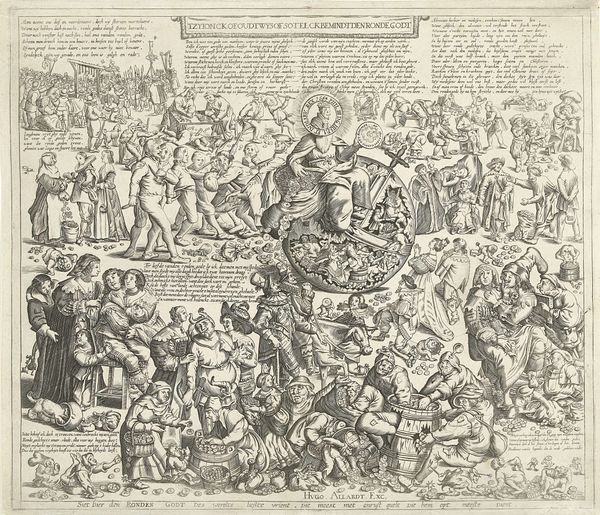
Let Us Have Peace! -Fortissimo, from Harper's Weekly Possibly 1869
0:00
0:00
drawing, graphic-art, print, pen, engraving
#
drawing
#
graphic-art
#
pen drawing
# print
#
caricature
#
pen
#
history-painting
#
engraving
Dimensions: 370 × 520 mm
Copyright: Public Domain
Curator: Oh, what a glorious mess. At first glance, it seems utterly chaotic. Editor: Well, it's an organised chaos! This drawing, "Let Us Have Peace! – Fortissimo," possibly from 1869 and here on loan to the Art Institute of Chicago, by Charles Green Bush. It looks like an engraving, reproduced from a page in *Harper’s Weekly*, with all its graphic, linear intensity. Curator: Precisely, and intensely sarcastic. Notice how Bush uses the visual metaphor of a raucous orchestra—more like a brawl, really—to lampoon the clamorous state of American politics post-Civil War. Look how these musical "instruments" represent competing factions all vying to be heard. I bet it resonated deeply. Editor: Absolutely, but note the carefully orchestrated composition—the high vantage point looking over a not-so harmonious multitude. See how Bush creates depth through meticulous hatching and cross-hatching? Each figure, each instrument adds to this cacophony that almost feels… sculptural, doesn't it? Curator: Almost as sculptural as a mosh pit at a really aggressive opera, with less choreographed stomping. But what is interesting about these satirical prints from this era is how much they reflect deep public anxieties. That “Let Us Have Peace” banner is clearly being beaten into silence by other agendas. Editor: A point well taken. The detail given to rendering the faces and attitudes of everyone represented makes the political critique pretty unambiguous. The structural imbalance itself amplifies the message, pushing toward an unresolved dissonance—a nation struggling for unity. It's pure political theory through art. Curator: Though heavy on theory for sure, to me it’s just as importantly, a kind of emotional record. Can you feel it? Bush doesn’t just dissect—he transmits the anxious energy, making it palpable. I find that remarkable. Editor: In any case, its brilliance, however cutting, stems from how it so artfully communicates complex social dynamics via intricate symbolism and structural awareness. Bush leaves us a resonating piece. Curator: And hopefully, it makes us think about whether, now, the symphony is any less of a battle, however subtle, than it was then.
Comments
No comments
Be the first to comment and join the conversation on the ultimate creative platform.
